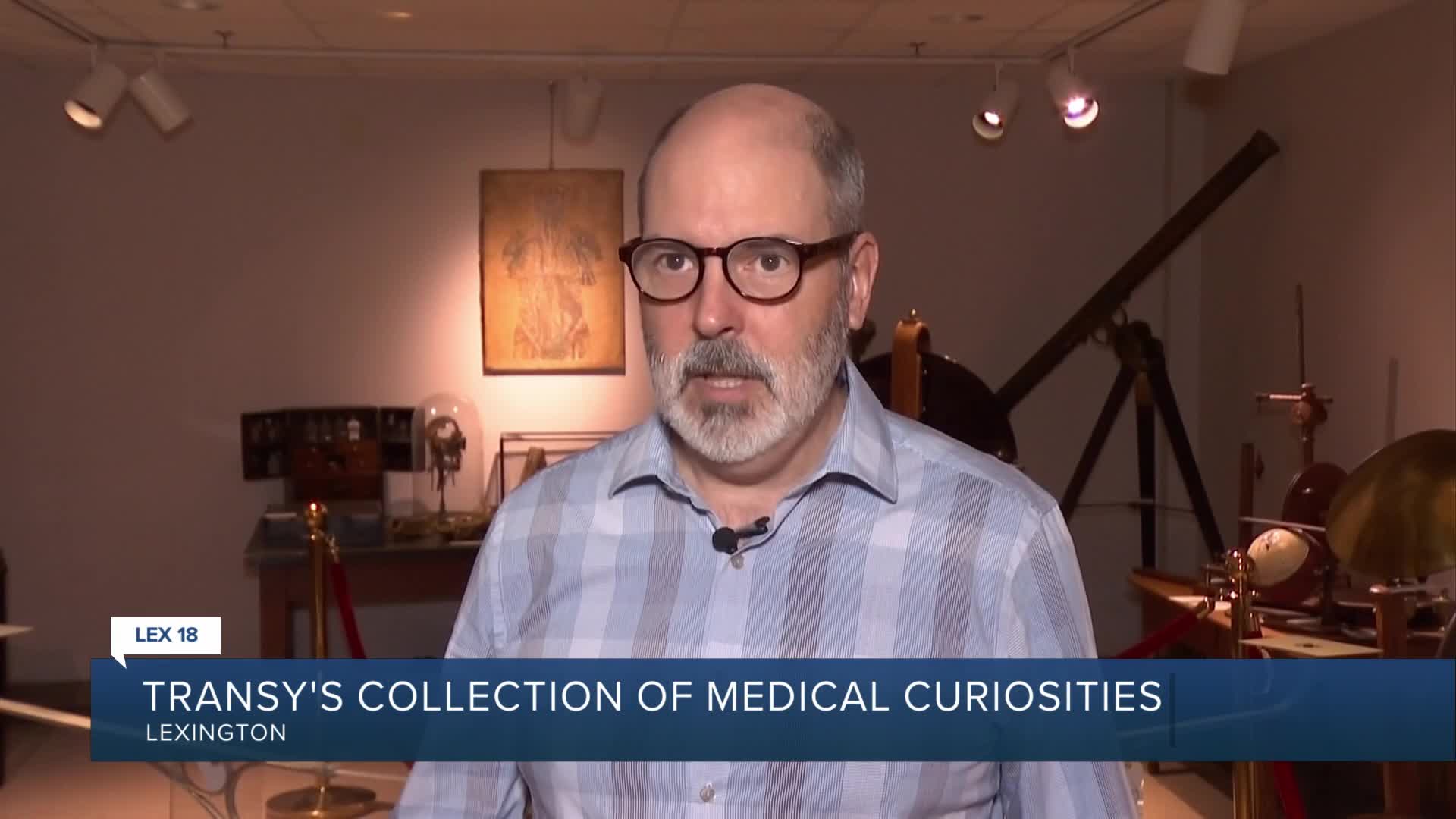LEXINGTON, Ky. (LEX 18) — From a possible sample of the infamous Kentucky meat shower to the world's largest hairball, a little-known museum at Transylvania University is full of curiosities.
The Monroe Moosnick Museum houses centuries-old medical artifacts that tell the story of 19th-century medical education.
Physics Professor Jamie Day serves as curator of this unusual collection, which includes diseased specimens, rare animals and historic medical instruments. The artifacts were once cutting-edge teaching tools at one of America's most prestigious medical schools.
"So this is our hairball, which is the largest in the world and also interestingly it was given to us by George Rogers Clark Todd, who was Mary Todd Lincoln's youngest brother," Day said.
That family connection earned it the title of "world's most politically connected hairball." The massive specimen originally weighed 35 pounds when wet but has dried to about 15 pounds over time.
Named after a late chemistry professor, the Moosnick Museum doesn't occupy a single building. Instead, the collection of historic medical and scientific devices is scattered throughout campus.
"There's a period where a lot of this was considered junk, but fortunately people held on to it long enough that it's now considered respected as antique junk and useful junk," Day said.
As one of the country's oldest universities, Transylvania's medical school once produced thousands of doctors. The educational instruments were acquired during trips to London and Paris, making it exceptionally well-equipped for its time.
"It's sometimes one of the best equipped medical schools in the world, not just in America, and that sounds like an exaggeration, but we have evidence to back that up," Day said. "We had instrument makers who worked for Kings make instruments for us, so it was the real deal."
Day has spent years researching these teaching instruments, including a rare wax medical Venus from Italy that he discovered in the basement of the science building.
"I was looking for any medical artifacts that we had and up high on the shelf I saw the silhouette of a hip. And I climbed up on a box to see what it was, and I came face to face with this one-eyed flayed woman and it was pretty terrifying," Day said.
The collection includes other unsettling pieces like a plaster cast of a two-headed infant and a brain cast from someone who died from syphilis. While disturbing, these artifacts served important educational purposes in the 1800s.
"In order to teach people about what they saw, this was a really nice — not pleasant but a very nice way to share the information about something like that," Day said.
Not all items are gruesome. The museum also houses a rare kiwi bird.
These artifacts continue to serve an educational purpose, though their role has evolved from medical training to teaching history and culture.
"So these were used to teach students here 200 years ago, and we can still use them to teach different things. We're not teaching medicine with them, but we can teach history with them. We can teach about culture with them," Day said.
Day's research into the collection often reveals surprising truths about the university's past.
"I've heard some outlandish things about some artifacts we have or about people who went here. And it turns out the deeper I dig, the more I find that they are true," Day said.





